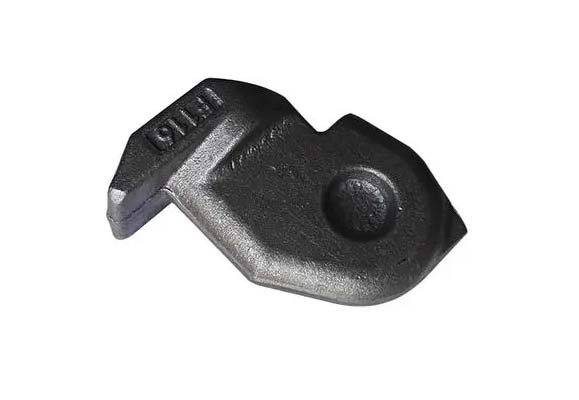- Contact Innally, Let you purchase forgings in China more favorable prices, products more assured!
- Hotline:+(86)15038323776 Email:innally@innally.com
How to improve the quality of petrochemical forgings?
- Category: Steel forgings, Thermal forging
- |
- Date: 19/10/2023
improving the quality of petrochemical forgings needs to be comprehensively considered from many aspects such as material selection, mold design, forging process and quality inspection and evaluation. Through reasonable selection and optimization of these elements, the quality of petrochemical forgings can be effectively improved, the safe and stable operation of equipment can be ensured, and the production efficiency can be improved.
Product Details
Petrochemical forgings play a key role in the petrochemical industry, and their quality directly affects the performance of the equipment and the safety of the production process. Therefore, it is very important to improve the quality of petrochemical forgings. This paper will introduce some key steps to improve the quality of petrochemical forgings.
First, material selection
The choice of materials is the key factor to improve the quality of petrochemical forgings. Due to the corrosive, oxidizing, high temperature and high pressure characteristics in the petrochemical environment, it is necessary to select materials with corresponding characteristics to manufacture forgings. For example, materials such as superalloys and super stainless steel have excellent high temperature properties and corrosion resistance, which are suitable for the manufacture of petrochemical forgings.

Second, mold design
Die design is an important link in forging process. Reasonable design can reduce forging defects and improve forging quality. Here are some key design elements:
Reasonable choice of forging parameters: the choice of forging parameters directly affects the quality and production efficiency of forging parts. The quality of forgings can be improved effectively by selecting proper parameters such as forging temperature, deformation amount and deformation speed.
Optimize the mold structure: the mold structure should adapt to the deformation characteristics of the material and the structural characteristics of the forging. Reasonable mold structure can reduce the defects in forging process and improve the quality of forging parts.
Accurate mold processing and installation: The accuracy of mold processing and installation directly affects the quality of the forging. By improving the machining and installation accuracy, the dimensional error and deformation of forging can be reduced, and the quality of forging can be improved.
Third, forging process
Forging process has a decisive influence on the quality of forgings. Here are some key forging process elements:
Reasonable heating and cooling system: A reasonable heating and cooling system can reduce defects such as material oxidation, overheating and cooling cracks and improve the quality of forgings.
Precise deformation control: Accurate deformation control can ensure that the material is fully deformed to obtain the ideal microstructure and mechanical properties.
Auxiliary process: such as lubrication, shot peening and other auxiliary processes can effectively reduce the friction and stress in the forging process, improve the quality of forging.
Fourth, quality testing and evaluation
Quality inspection and evaluation is a necessary step to ensure the quality of forging. The quality and reliability of forgings can be improved effectively through comprehensive quality inspection and evaluation of forgings by means of non-destructive testing technology and mechanical property testing.
To sum up, improving the quality of petrochemical forgings needs to be comprehensively considered from many aspects such as material selection, mold design, forging process and quality inspection and evaluation. Through reasonable selection and optimization of these elements, the quality of petrochemical forgings can be effectively improved, the safe and stable operation of equipment can be ensured, and the production efficiency can be improved.
nannan
INNALLY mainly provides you with various types of cast and forged parts products. Welcome your inquiries! innally@innally.com
Related Products
Search
Forging center
- Steel forgings
- Aluminium alloy forging
- Titanium alloy forging
- Stainless steel forging
- Copper forging
- Automotive forgings
- Locomotive forging
- Bicycle forgings
- Motorcycle forging
- Rigging and fasteners
- Bearing forging
- Electric power fittings
- Marine forging
- Mechanical forgings for metalworking
- Mining machinery forgings
- Marine engineering forgings
- Construction machinery forgings
Popular product

© 2025. All Rights Reserved.






